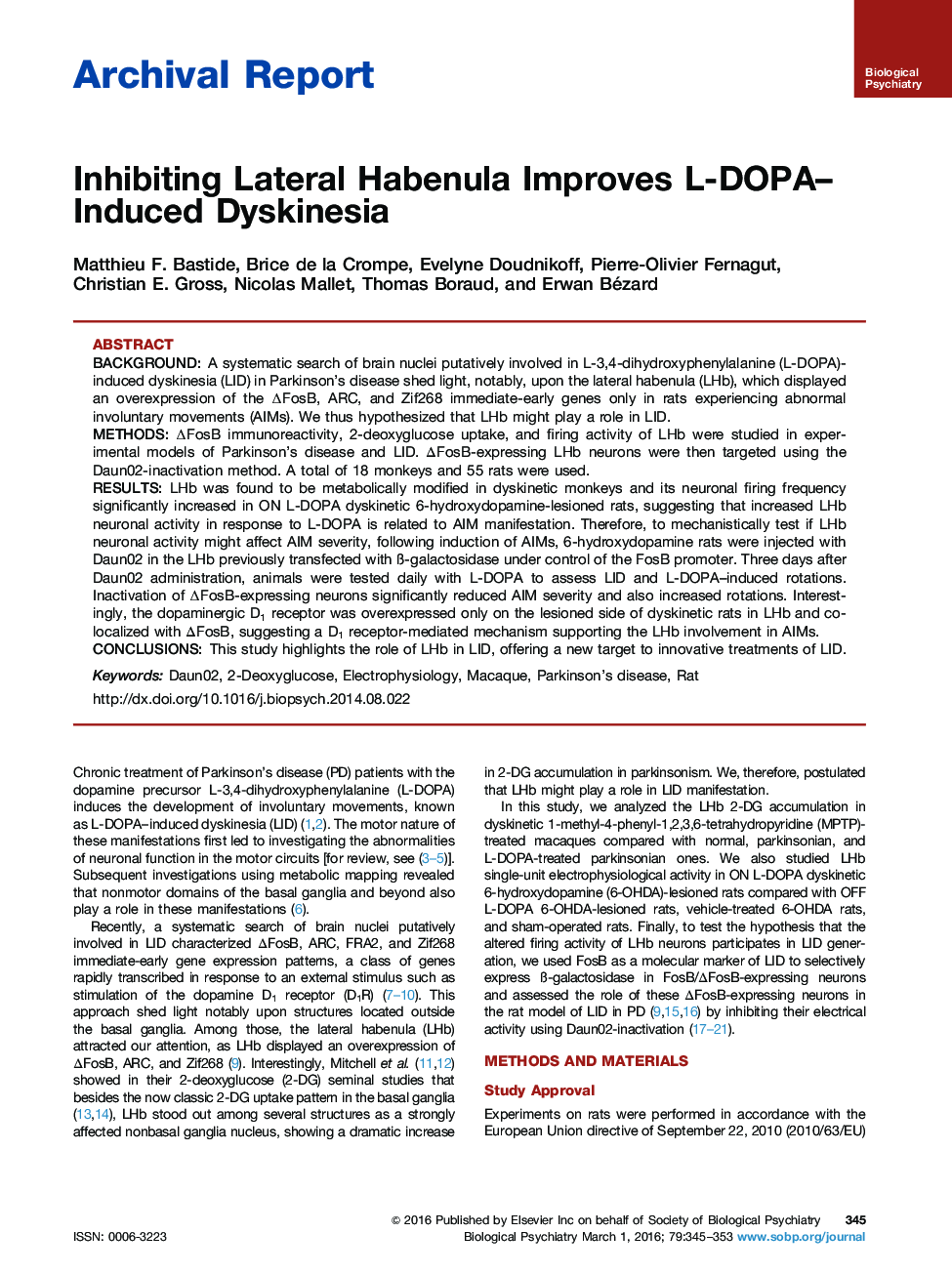| Article ID | Journal | Published Year | Pages | File Type |
|---|---|---|---|---|
| 4177051 | Biological Psychiatry | 2016 | 9 Pages |
BackgroundA systematic search of brain nuclei putatively involved in L-3,4-dihydroxyphenylalanine (L-DOPA)-induced dyskinesia (LID) in Parkinson’s disease shed light, notably, upon the lateral habenula (LHb), which displayed an overexpression of the ∆FosB, ARC, and Zif268 immediate-early genes only in rats experiencing abnormal involuntary movements (AIMs). We thus hypothesized that LHb might play a role in LID.Methods∆FosB immunoreactivity, 2-deoxyglucose uptake, and firing activity of LHb were studied in experimental models of Parkinson’s disease and LID. ΔFosB-expressing LHb neurons were then targeted using the Daun02-inactivation method. A total of 18 monkeys and 55 rats were used.ResultsLHb was found to be metabolically modified in dyskinetic monkeys and its neuronal firing frequency significantly increased in ON L-DOPA dyskinetic 6-hydroxydopamine-lesioned rats, suggesting that increased LHb neuronal activity in response to L-DOPA is related to AIM manifestation. Therefore, to mechanistically test if LHb neuronal activity might affect AIM severity, following induction of AIMs, 6-hydroxydopamine rats were injected with Daun02 in the LHb previously transfected with ß-galactosidase under control of the FosB promoter. Three days after Daun02 administration, animals were tested daily with L-DOPA to assess LID and L-DOPA–induced rotations. Inactivation of ∆FosB-expressing neurons significantly reduced AIM severity and also increased rotations. Interestingly, the dopaminergic D1 receptor was overexpressed only on the lesioned side of dyskinetic rats in LHb and co-localized with ΔFosB, suggesting a D1 receptor-mediated mechanism supporting the LHb involvement in AIMs.ConclusionsThis study highlights the role of LHb in LID, offering a new target to innovative treatments of LID.
